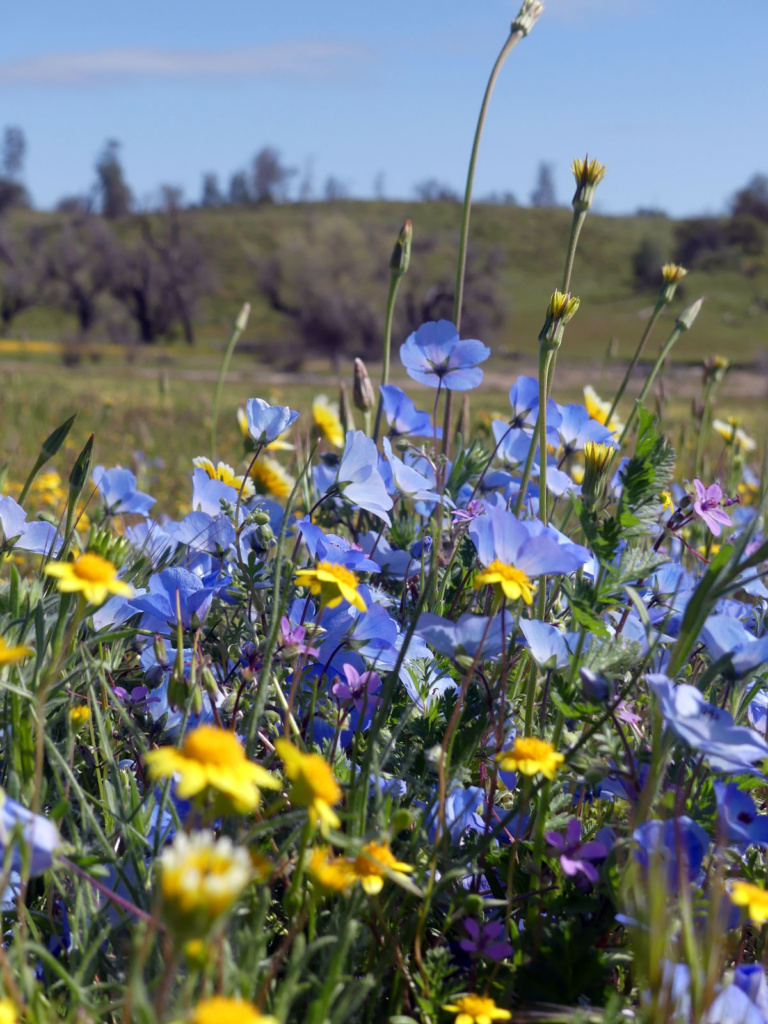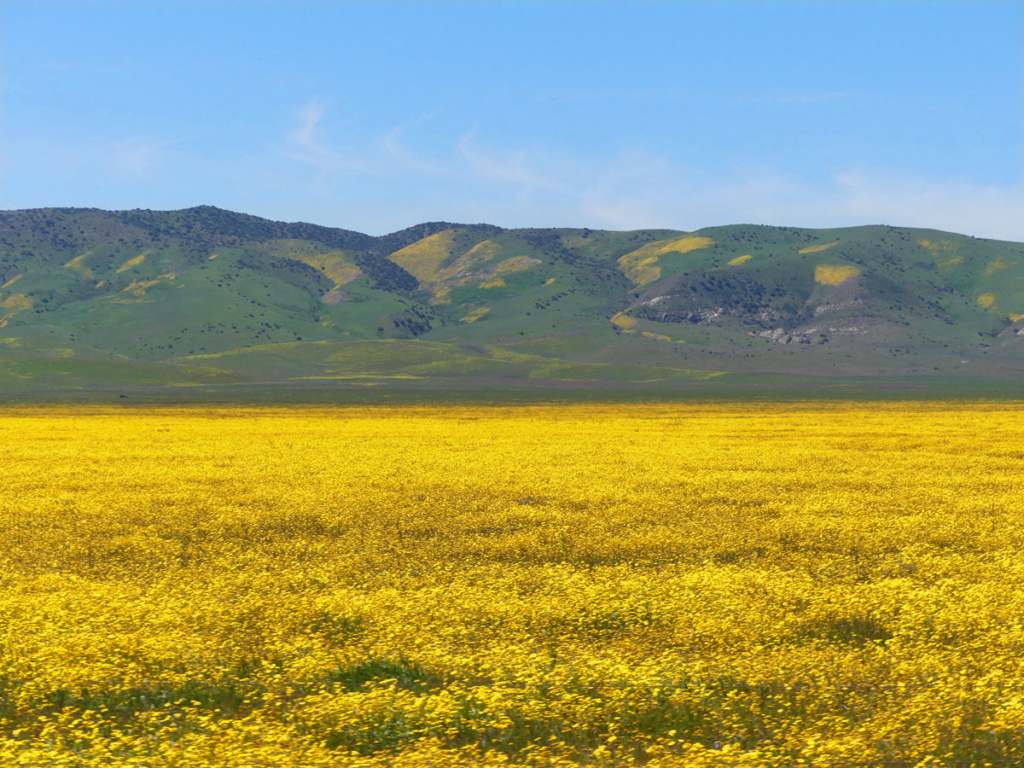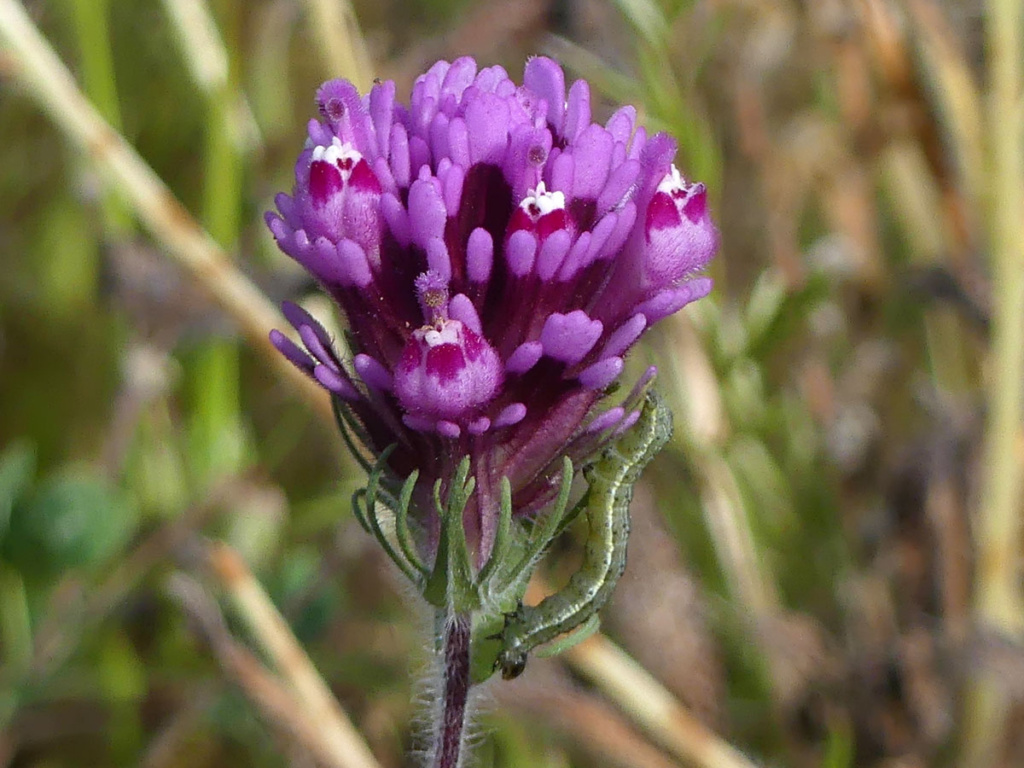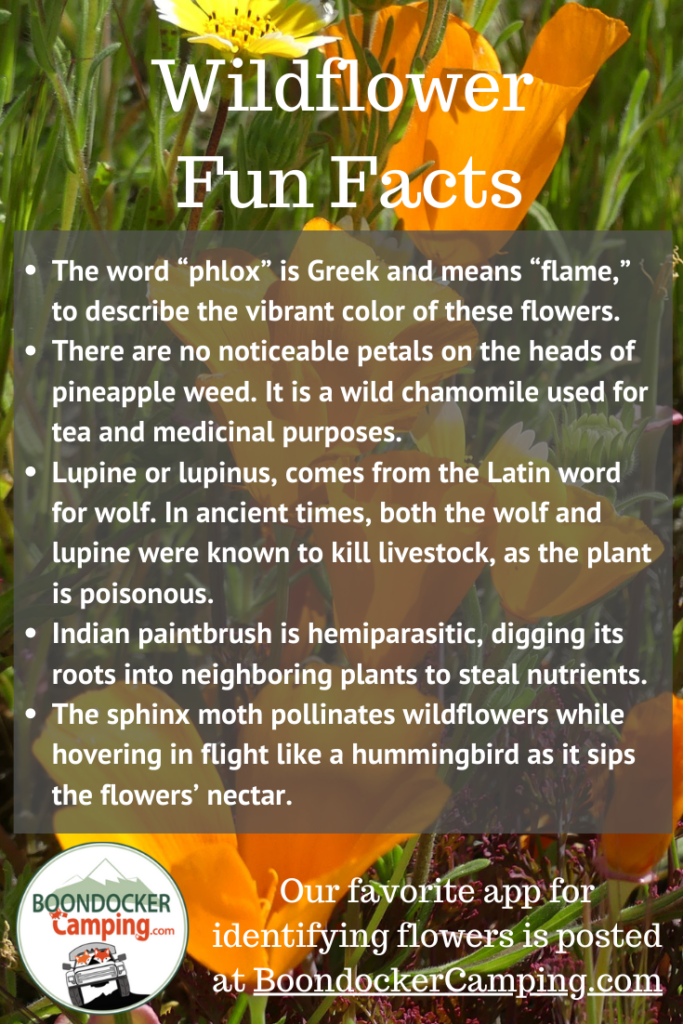Wildflowers inspire me with their tenacious perseverance. Despite their fragile appearance, these flowers are tough! Wildflowers adapt themselves to periods of drought by banking seeds when rain is scarce. This year in California and the western states there has been an abundance of rain and snow which can trigger SUPER blooms! In February we already spied color in the Mojave National Preserve, the Eastern Sierras and parts of Death Valley while camping there, (updated 2023).
Survival tool
Seed banks are a clever survival tool native wildflowers use by keeping a portion of their seeds dormant in the soil rather than sprouting them all at once. This helps ensure their long-term survival. You can read more about this underground bank in the soil.
Benefit of fire
Drought also brings terrible wildfires. Fire is a mixed blessing in that it can rejuvenate native landscapes. Renewal by fire is built into some native plants’ DNA. Many plants need high heat to sprout seeds, particularly those native to chaparral or shrubland.
In the aftermath of a wildfire, ash and charcoal from the burned trees cover the forest floor. Winter rains wash and soak nutrients deep into the soil. Where tree branches once blocked the sun, bright light can now reach dormant seeds. The warmer spring temperatures trigger the miracle of a palette of glorious wildflowers.
We must accept finite disappointment, but never lose infinite hope.” Martin Luther King, Jr.
Camping in the flowers
Our camping treks range from the coastal wilderness of Big Sur to the vast plains of Carrizo National Monument as well as the deserts of Death Valley and the Mojave National Preserve. We delight in the vast bloom of wildflowers and the array of butterflies, bees and birds attracted to them. Each meadow or canyon is adorned differently from the last with its own species of wildflowers and color.
Shell Creek is a remote area arrayed in carpets of varied hues of wildflowers. You can visit Shell Creek while en route to the Carrizo plains and Soda Lake. You can call for current info to see wildflowers at the Wild Flower Hotline by the Thomas Payne Foundation.
The desert is transformed by wildflowers and blooming cacti, changing the barren landscape to bright spectacles of color. Cactus, in particular, have brilliant, spectacular flowers. Death Valley is a great place to enjoy a large variety of wildflowers and cacti. However, the bloom is short-lived as soon as the temperatures start to heat up, usually by May. To see the best blooming time there we like to visit in March and April. Check out our recommended guidebooks for visiting Death Valley.
In California, you can find where flowers are blooming on the visit southern California website. Another good resource is Recreation.gov for wildflowers in 5 western states.
Please remember not to trudge through wildflowers tramping them down. Stick to trails where others have already walked or tread lightly and minimize your impact. Trampled wildflowers may not reseed for future blooms.
Plant identification
Recently I have seen many “new to me” kinds of wildflowers besides our usual natives of California poppy and lupine. Discovering their identity was made simpler with my handy “Picture This” cell phone app. I learned the names of Milk Vetch, Cliff Aster and even a discovery at home…..the Pineapple Weed aka wild chamomile.
I also use some handy reference guides such as, “National Audubon Society Field Guide to North American Wildflowers: Western Region.” The Audubon Society has a wonderful selection of field guides including rocks, plants, butterflies, star gazing, fish, insects, and mammals.
Using the “Picture This” app is by far the fastest and my favorite way to identify flowers. However, it requires cell reception which is not always available in the backcountry. That is when the guidebooks come to the rescue.
Fun facts about wildflowers
I put together a little fun fact sheet for wildflowers on Pinterest. You can check out my camping boards and other pins for trip ideas and camping hacks. Pinterest is a great search tool for planning your next camping trip.
Destination 4×4 has posted about many different wildflowers, including those found in the deserts of our western states. Check out this blog for some great posts about ghost town history and desert trips too.




